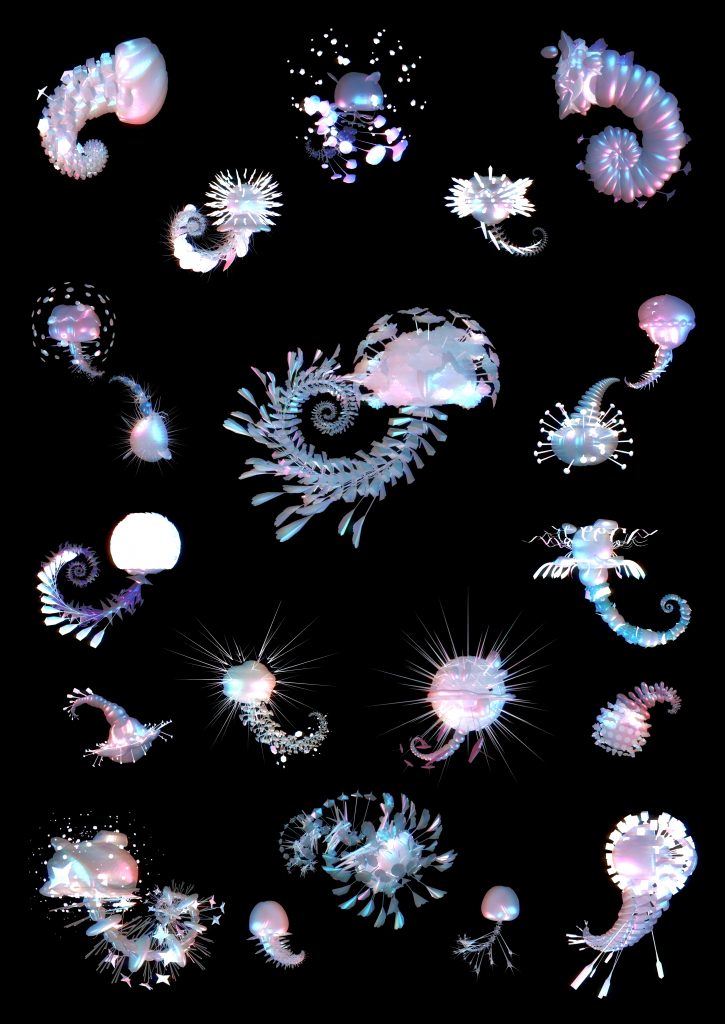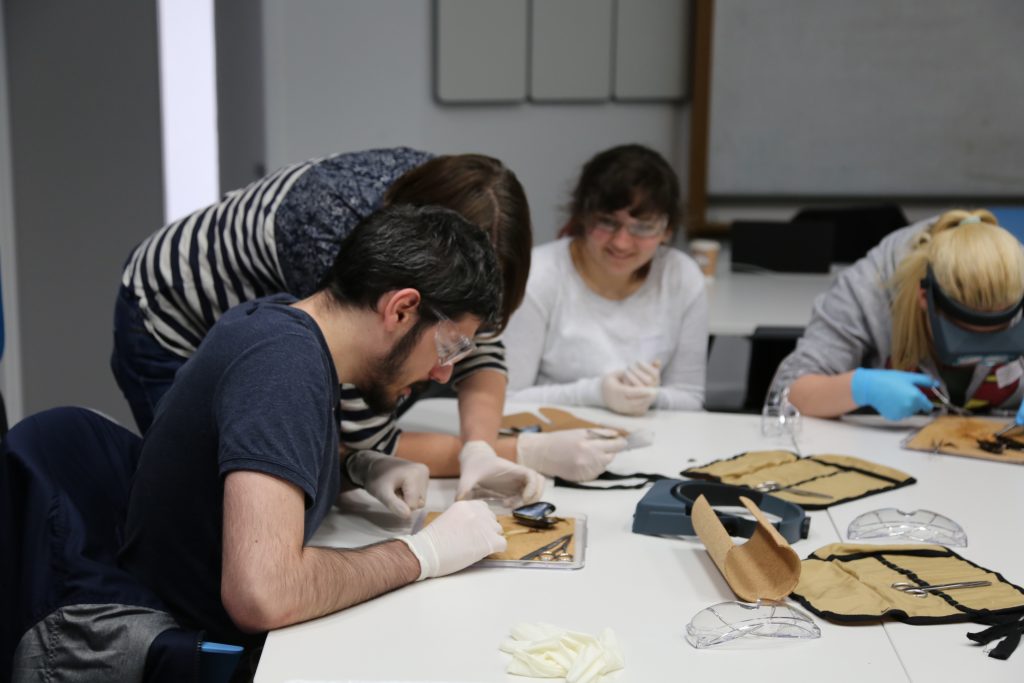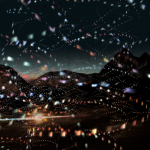A new digital artwork created by two animation lecturers from Bournemouth University, Paul Smith and Vicky Isley, has been featured as part of Paisley’s 2021 City of Culture bid. The project linked together Paisley’s history, cultural and natural environment through the creation of a digital Paisley Pearl for each resident of the town. The project was commissioned by the University of the West of Scotland, as one of a number of cultural activities taking place in Paisley during its application for the City of Culture 2021.
The duo, known as boredomresearch, developed an art project which created a new Paisley form for each resident of the town via a digital loom. The loom and creative software have the potential to create a Paisley Pearl for each of the 7.4 billion people on earth at the time of the artwork’s launch. The unique forms were based on both the Paisley pattern and the freshwater pearl mussel, once indigenous to the area.
“We wanted to produce an art project which reflected Paisley’s industrial past, natural biodiversity and show how creativity can make a difference to its future,” explains Paul, “Paisley is famous for its connections with the textile industry, but its natural history is much less well known. The White Cart River was once a thriving habitat for the freshwater pearl mussel, which is now extinct in the area, partly because of the success of the local textile industry damaging its natural habitats.”
A key part of the project for Vicky and Paul was this link between science and art. By working with researchers from the University of Glasgow, they developed a better understanding of the ecological importance of the fresh water pearl mussel, which they reflected in their art.
“Over half of the world’s fresh water pearl mussels are found in Scotland’s waters, so it’s an important location for a now critically endangered species,” says Vicky, “We worked with researchers who are trying to better understand the species and local staff from Pearls in Peril a conservation project who are trying to protect the mussel’s river habitat. The mussel’s pearls inspired our Paisley Pearl exhibition and the community workshops we delivered as part of the project.”
As part of their digital art commission, Paul and Vicky led three workshops in the local area, with very different groups of people. The first saw undergraduate animation and game students from the University of the West of Scotland dissecting common mussels to learn more about the shapes and textures that could be used to form part of the new Paisley inspired forms.
“The session took them very much outside of their comfort zone,” says Paul, “Dissection doesn’t often take place in animation classes! We felt it was an important session to do, as it highlighted the interdisciplinary nature of our research and gave our students a much better understanding of the kinds of shapes and textures they could work with.”
“Once they’d dissected the mussels, we asked them to take digital images of the different parts and textures that they’d discovered. These fed into the kinds of shapes and patterns that we later used to form our unique Paisley Pearls.”
Two further workshops saw the team teaching programming to local secondary school children at Johnstone High School and working with Roar: Connections for Life (a community group of retired residents) to explore the lifecycle of the freshwater pearl mussel, in relation to their own lives.
“The group of retired residents, learnt how environmental changes are recorded in the growth rings of the mussel shell,” says Vicky, “These can tell you something about the age of the mussel and their environment; whether it was nutrient rich or not. We ask participants to map their own life experiences, marking out significant events on their own growth ring drawings. This helped us to facilitate in-depth conversations about the ecological significance of the mussel.”
“It was important for us to work with the local community as part of our commission,” continues Vicky, “Through the process of creating our final artwork, we wanted to work with local people to link Paisley’s past with its future.”
The decision about which city will become the 2021 City of Culture is expected in December.
For more information about Vicky Isley and Paul Smith’s research, visit their website or watch a short video on their Paisley project.



 Research project showing the transmission of infectious diseases through animation wins Lumen Prize
Research project showing the transmission of infectious diseases through animation wins Lumen Prize










 Final Bournemouth University publication of 2025
Final Bournemouth University publication of 2025 On Christmas Day in the Morning…
On Christmas Day in the Morning… New Nepal scoping review on maternal & neonatal health
New Nepal scoping review on maternal & neonatal health Fourth INRC Symposium: From Clinical Applications to Neuro-Inspired Computation
Fourth INRC Symposium: From Clinical Applications to Neuro-Inspired Computation ECR Funding Open Call: Research Culture & Community Grant – Application Deadline Friday 12 December
ECR Funding Open Call: Research Culture & Community Grant – Application Deadline Friday 12 December MSCA Postdoctoral Fellowships 2025 Call
MSCA Postdoctoral Fellowships 2025 Call ERC Advanced Grant 2025 Webinar
ERC Advanced Grant 2025 Webinar Horizon Europe Work Programme 2025 Published
Horizon Europe Work Programme 2025 Published Horizon Europe 2025 Work Programme pre-Published
Horizon Europe 2025 Work Programme pre-Published Update on UKRO services
Update on UKRO services European research project exploring use of ‘virtual twins’ to better manage metabolic associated fatty liver disease
European research project exploring use of ‘virtual twins’ to better manage metabolic associated fatty liver disease